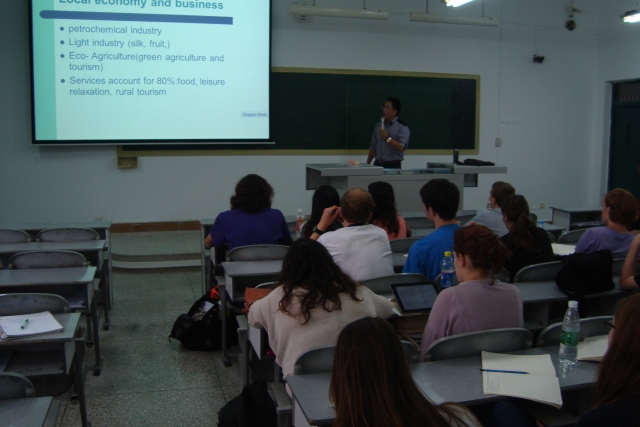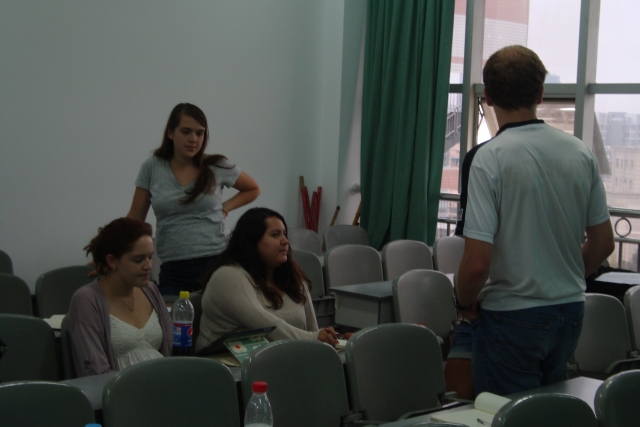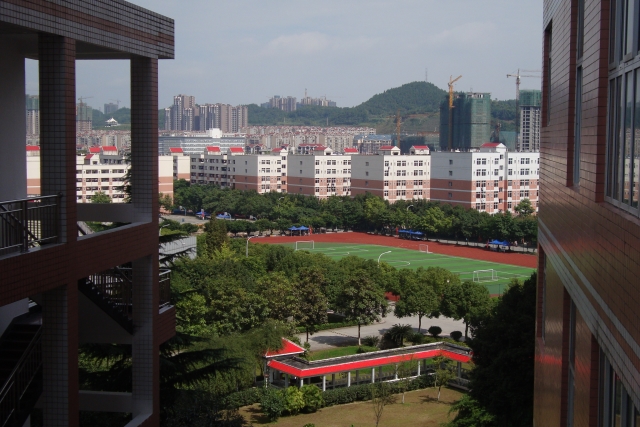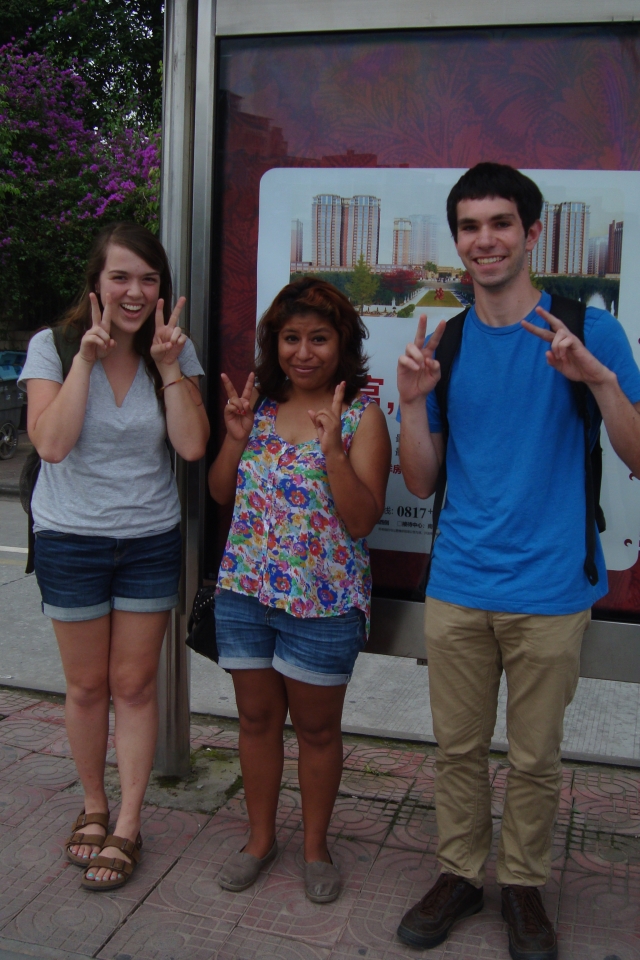Study with Chinese characteristics
Deng Xiaoping, China’s principal leader from 1978 to 1992, famously described his country’s distinctive economic blend of free-wheeling market forces and centralized controls as “socialism with Chinese characteristics.” Since then, people within China and those who visit have often tried to articulate the “Chinese characteristics” that mark various aspects of life here. During the study portion of SST – the first six weeks of the term – we’re been experiencing Chinese academic life and its distinctive characteristics. We’ve been learning on two levels: the material that teachers present to us directly and, indirectly, something of what it’s like to be a university student in this part of the world and how education functions here.
Although each week has varied a bit, our typical school days go something like this. After an early breakfast with our host families – and it’s hard to generalize about home meals, but breakfast might be steamed bread, cold noodles, or fried or hard boiled eggs – students take a city bus to campus, often arriving around 8:00 am. Those who live close to campus, walk.
We have Chinese language class in the morning, from 8:30 to 11:00. There are two sections. Each group meets in one of the small classrooms in the main academic building on campus. A “small” classroom here is one with only 84 seats. Most classrooms are large because most Chinese class sections include hundreds of students. Desks and chairs are bolted to the floor to keep the seating compact and maximize the use of space. Lecture is the mode of instruction in Chinese universities, although our language teachers use a wider variety of pedagogies developed for foreign language learning. We often see Chinese students before or between classes, standing alone or pacing in an empty room, reciting their own class material in an effort to memorize it.
After language class, we have a break until 3:00 pm. In Sichuan, with its hot and humid climate, this sort of mid-day break is typical. Many businesses close or reduce their level of activity from 1:00 to 3:00 pm, and Chinese university classes do not meet for a few hours after lunch. Most Chinese folks rest in the early afternoon; primary school students go home during this time to nap. SSTers who live close to campus go home for lunch with host families life, and others split into small groups to eat in the dining hall on campus or in one of small restaurants outside the campus middle gate.
In the afternoon, from 3:00 to 5:00, we typically have a lecture on some aspect of Chinese life and presented by a China West faculty member. Most lectures are delivered in English, but some are given in Chinese and then translated for us. We’ve been impressed with the effort that professors go to prepare to speak to us in English since few of them are accustomed to speaking about their areas of expertise in anything other than Chinese. Virtually all lecturers use Power Point slides to illustrate their presentations, and also speak into a microphone. Lecturing with a microphone is the norm at our university, given the large size of most class sections, and professors expect to speak with some sort of voice amplification even though our group is much smaller than those they usually address. A few professors invite questions because we are a foreign group, but students asking questions of professors is not a typical part of the Chinese classroom environment and can even come across as mildly offensive by suggesting that the lecturer did not address the topic adequately. (Indeed, one lecturer told a Goshen student “In America students ask questions, but in China we don’t do that.”)
Our lecture topics this term include Confucianism, the legacy of Deng Xiaoping, the famous 18th-century work of literature Dream of Red Mansions, the structure of the Communist Party, author Mo Yan (recipient of the 2012 Nobel Prize in Literature), development of China’s economy since 1978, the local Nanchong economy, the education system in China today, environmental issues in Sichuan Province, and more.
After afternoon lectures, SSTers head home for supper with their host families, and a variety of evening activities. Some host family evenings center on sibling’s middle school homework, others on shopping, and still others on watching TV.












